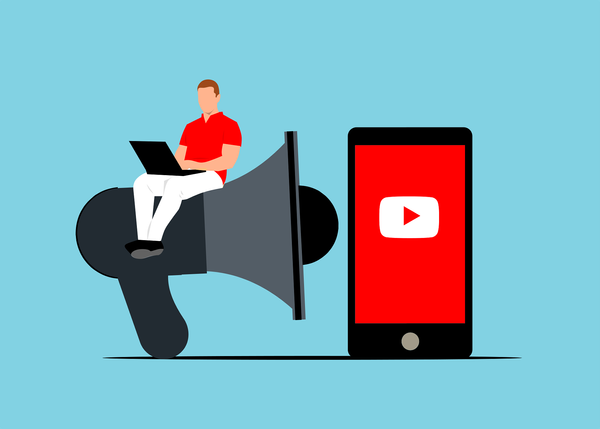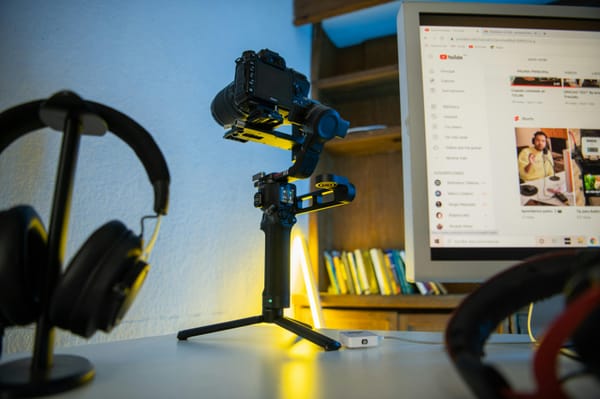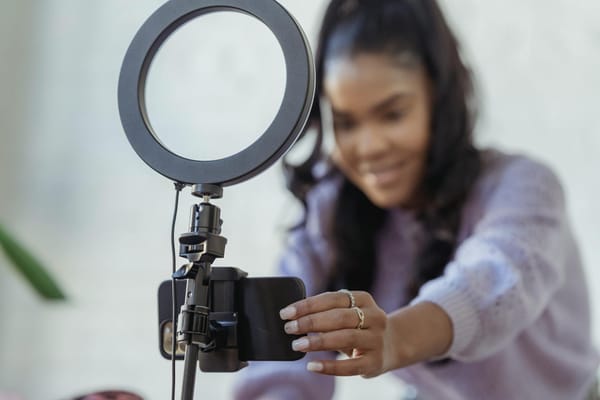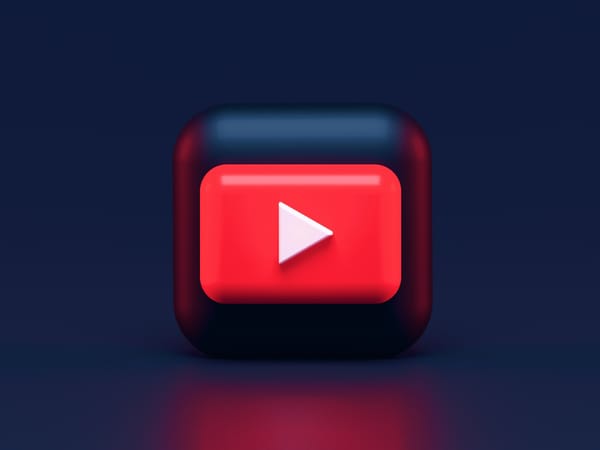How to Protect Your YouTube Channel from Bans: Essential Tips and Strategies

If you're a content creator, you know that YouTube is one of the top long-form social channels for building loyal, engaged communities. That's why you need to be proactive in protecting your YouTube channel from bans, especially nowadays, when this threat is so prominent.
This unpleasant experience often strikes without warning, and sometimes, it's even irreversible. Whether it’s a mistaken violation of YouTube’s terms or an external attack, a ban implies a sudden, significant loss for both your content and revenue.
Our advice? Stay proactive. Safeguard your channel now to keep it secure and in good standing.
This guide walks you through everything you need to know about protecting your YouTube channel from bans, including:
● Key reasons accounts get banned and how to avoid them
● Practical steps to strengthen your channel’s security
● Advanced strategies to keep your account active and recover quickly if a ban happens
Understanding YouTube’s Policies
While not as fun as creating content, keeping up with YouTube’s policies is essential if you want to avoid any unexpected takedowns or bans. So, let's do a recap of what you should know about YouTube's core guidelines.
The community guidelines
YouTube’s Community Guidelines are the rulebook for all content on the platform. That means videos, comments, suspicious links, and thumbnails. These guidelines are designed to keep the platform safe, respectful, and enjoyable for everyone. Breaking the rules can lead to strikes on your account, and multiple strikes within a short period may result in a permanent ban.
Some key areas to watch out for include:
● Spam and deceptive practices – Don’t mislead your audience with fake engagements or scams.
● Sensitive content – YouTube has strict rules against nudity, explicit content, and anything that threatens child safety.
● Harassment and hate speech – content that promotes hate, harassment, or violent behavior won’t last long on YouTube.
● Harmful or dangerous content – This includes content that incites violence or promotes harmful activities, as well as misinformation, like unverified COVID-19 claims.
If you've been struck before, you probably know that creators receive a notification for any content flagged as violating these guidelines. If it happens, make sure you understand why and avoid similar issues in the future. Each violation will impact your channel’s standing.
The terms of service
YouTube’s Terms of Service (ToS) outline the legal framework for your account, covering what’s expected of both creators and the platform itself. Here are some key points:
● Content ownership – While you own the content you upload, YouTube holds the rights to use it across its services, including for promotional purposes.
● Monetization rules – Only content that meets YouTube’s standards (both in Community Guidelines and ToS) is eligible for monetization. Content that doesn’t comply may be demonetized or removed.
● Account termination – YouTube reserves the right to terminate accounts that violate these terms repeatedly or severely. It’s crucial to read the fine print to understand what can lead to a ban.
● Data privacy – YouTube commits to handling your personal data responsibly, but you’re also responsible for protecting the privacy of anyone appearing in your content.
● Facial recognition data – YouTube's Terms of Service explicitly prohibit collecting information that identifies individuals without their consent, including facial recognition data.
Common Reasons for Channel Bans
YouTube enforces a strict set of policies to maintain a safe and respectful platform. Violating these policies, whether intentionally or by mistake, can result in strikes against your channel.
Policy violations
Repeated violations, especially in quick succession, can lead to a permanent ban. Here are some of the most common violations that could get a channel banned:
● Copyright infringement – Using copyrighted music, video clips, or other content without permission can result in Content ID claims or copyright strikes.
● Hate speech – Content that promotes violence, hatred, or discrimination against individuals or groups based on race, religion, gender, or other protected attributes is strictly prohibited.
● Spam and deceptive practices – Misleading behavior, such as clickbait, misleading metadata, or impersonation, can result in strikes.
● Child safety violation – Content that exploits, endangers, or harms minors is strictly prohibited and may result in immediate channel termination.
● Sensitive and dangerous content – content that promotes harmful or dangerous behaviors, such as self-harm or violence, is prohibited. This includes misinformation, particularly around serious health issues like COVID-19.
● Regulated goods – Promoting or selling regulated goods, such as firearms, drugs, or other restricted items, is also grounds for strikes and potential termination.
Repeated offenses policy
YouTube operates on a three-strike system:
- First strike – Usually results in a one-week restriction on uploads or streaming.
- Second strike – Issued within 90 days of the first strike, this leads to a two-week restriction.
- Third strike – If a third strike occurs within 90 days of the first two, the channel will be terminated permanently.
Strikes expire after 90 days, but accumulating multiple within this period can result in termination.
Content that can lead to a permanent ban
Certain types of content violations on YouTube are considered severe enough to result in an immediate and permanent ban. These include:
● Child exploitation
● Hate speech and harassment
● Promotion of criminal organizations
● Harmful or dangerous acts
● Violent or graphic content (extremely violent, gory, or explicit content that is posted without educational, documentary, scientific, or artistic context (EDSA) is banned outright)
● Repeated copyright infringement
Best Practices for Content Creation
1. Create compliant content
To keep your channel in good standing, make sure each video follows YouTube’s guidelines. Here are some key tips:
● Stay within the guidelines. If you’re unsure about your content, refer to YouTube’s resources or test it with the Self-Certification Program to check for compliance before uploading.
● Be cautious with sensitive topics. Topics like health or current events can be risky. Always use credible sources and stick to facts.
● Use age-appropriate labels. For content with mature themes, set age restrictions to protect younger viewers.
● Mind your tone and language. Avoid content that could be perceived as aggressive or derogatory. YouTube values a respectful community, so keep the tone balanced.
2. Avoid copyright issues
Copyright strikes are one of the most common causes of channel takedowns. Here's how to create content without legal complications:
● Understand fair use. Fair use allows limited use of copyrighted content in ways like commentary or parody, but it’s often subjective. If you’re unsure, ask yourself if your use of the content transforms it enough.
● Use licensed or royalty-free content. For music, clips, or images, rely on royalty-free sources or purchase licensed content. Sites like Epidemic Sound and Artlist offer music libraries specifically for creators. For free visuals, platforms like Pixabay or Unsplash provide copyright-free images.
● Give credit when needed. For Creative Commons content, make sure you attribute the creator as specified.
● Use the YouTube Copyright Match tool. This tool identifies instances where others might have used your content without permission.
● Beware of “short clips” assumptions. Many assume that short clips are safe, but using even brief copyrighted material without transformation can lead to a strike.
3. Maximize engagement with content creation tools
The right tools and workflow can make your content creation process more efficient and polished:
● Batch content production. Planning, filming, and editing several videos at once can streamline your workflow and keep your content calendar full. Tools like Trello or Notion can help organize scripts, schedules, and tasks.
● Optimize editing. If you’re new to editing, platforms like iMovie or DaVinci Resolve are beginner-friendly options.
● Create thumbnails and graphics consistently. Use tools like Canva or Adobe Spark to create eye-catching, branded thumbnails to give your videos an upgraded look.
● Engage your audience. Responding to comments fosters community and helps with YouTube’s engagement metrics. Use YouTube Studio to filter and prioritize comments, especially on newer videos where engagement can impact reach.
Best Practices for Long-Term Security
Let's explore some essential best practices to ensure the long-term security of YouTube channels:
● Use a unique and complex password. Your YouTube account password should be different from any other password you use for your online accounts. It should be long, complex, and include a mix of uppercase and lowercase letters, numbers, and symbols.
● Enable two-factor authentication (2FA). 2FA adds an extra layer of security by requiring you to enter a unique code from your phone or email in addition to your strong password when logging in.
● Regularly update and review your account security settings. Stay one step ahead by checking your YouTube account settings regularly to make sure you are comfortable with the connected apps, authorized devices, and other security options. We also recommend updating password periodically.
● Keep your antivirus software up to date. Antivirus software protects against malware, which can steal your login credentials and compromise your channel.
● Protect your devices. Your computer, phone, and other devices must be password-protected.
● Limit third-party access. Be cautious about granting third-party applications or services access to your YouTube account.
● Use a password manager. A password manager securely stores all your passwords, so you only need to remember one master password.
And because we like to save the best for last, a major recommendation from us is to consider security tools like Bitdefender Security for Creators. Why?
● It provides continuous 24/7 protection for your YouTube channel, alerting you to suspicious activities such as mass video deletions and unauthorized changes to your account settings.
● It also includes phishing attempts protection to safeguard your email accounts, award-winning hacking prevention for all your devices, and account recovery assistance.
Your YouTube Account has Been Banned, Now What? Recovery and Response Tips
If your YouTube account has been banned, it probably feels quite overwhelming. However, a clear, proactive approach can help you regain control. Here’s a step-by-step guide to help you respond effectively and minimize the impact on your channel.
1. Appeal the ban through YouTube Support
Your first step is to submit an appeal through YouTube Support. Go to the Account Recovery section in YouTube Studio or use the Account Issues Contact Form. Clearly explain your situation, provide relevant details, and explain how your content complies with YouTube's Community Guidelines.
Appeals are time-sensitive, so submit your request promptly. Check YouTube Studio or your email for appeal status updates.
2. Verify associated Google account security
If your Google account was compromised, it might have triggered a ban due to suspicious activity. Visit Google’s Security Checkup page to review:
● Connected devices – Remove unfamiliar devices with access.
● Third-party apps – Remove any unnecessary or suspicious permissions.
● Recent account changes – Check for unauthorized activity and adjust security settings.
3. Reset passwords and secure recovery options
To prevent future breaches, reset all related passwords immediately:
● Use strong, unique passwords for all accounts linked to YouTube.
● Update recovery options, such as backup emails and your mobile number.
● Use a password manager to keep everything organized and secure.
4. Restore your channel’s content and strengthen security
If your appeal succeeds and your YouTube channel is reinstated:
● Back up important data regularly to avoid future loss.
● Review content policies periodically to avoid accidental violations.
● Implement two-factor authentication (2FA) and limit permissions to essential users.
5. Develop a post-recovery strategy
Establish a post-recovery plan to prevent your channel from being hacked again:
● Monitor policy updates on YouTube to stay informed and compliant and regularly review account security settings and connected devices.
● Consider using antivirus software and password managers to secure devices and passwords effectively and protect yourself from other hazards, such as phishing scams.
Shadow Bans: Are They Real? Avoid the Possibility
Shadow bans, where content visibility is secretly limited, are often rumored but not officially confirmed by YouTube. However, low engagement, spammy behavior, or repeated minor violations could reduce your reach.
To avoid potential shadow bans, follow YouTube’s Community Guidelines, engage genuinely, and avoid misleading practices like clickbait, which may harm your channel’s visibility and credibility.
Stay Ahead of the Risks Associated with Your YouTube Channel
Your YouTube channel is a business asset as much as a video-sharing platform. That's where creators go to build brands and implicitly, new revenue streams – and hackers know it.
When hackers gain access to your YouTube account, they’re not after views. They’re after sensitive data. Think of email addresses, credit card details, and digital keys that could grant them access to other linked accounts. Once inside, hackers can hijack your channel, block your access, or even delete years of hard work. The damage can be devastating to both your brand and your income stream.
Many creators assume their channel is safe, especially if it’s smaller or less-known. But ironically, smaller YouTube accounts often lack proper security, making them easier targets.
Don’t wait until it’s too late. Top tools like Bitdefender’s Security for Creators are designed specifically with content creators in mind, offering protection against threats like online scams, data breaches, and unauthorized access attempts. Try it out today.
tags
Author

The meaning of Bitdefender’s mascot, the Dacian Draco, a symbol that depicts a mythical animal with a wolf’s head and a dragon’s body, is “to watch” and to “guard with a sharp eye.”
View all postsRight now Top posts
How to Protect Your WhatsApp from Hackers and Scammers – 8 Key Settings and Best Practices
April 03, 2025
Outpacing Cyberthreats: Bitdefender Together with Scuderia Ferrari HP in 2025
March 12, 2025
Streamjacking Scams On YouTube Leverage CS2 Pro Player Championships to Defraud Gamers
February 20, 2025
How to Identify and Protect Yourself from Gaming Laptop Scams
February 11, 2025
FOLLOW US ON SOCIAL MEDIA
You might also like
Bookmarks








